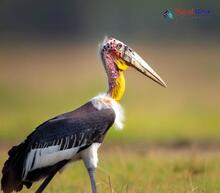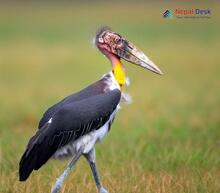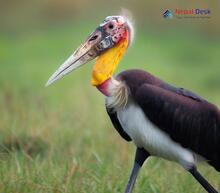The world of animals is genuinely captivating, housing a variety of species that have adapted and evolved to tolerate all sorts of environments and challenges. Among these captivating creatures are the Leptoptilos genus - a group of large storks that belong to the Ciconiidae family. Throughout history, these splendid birds have experienced fascinating transformations as they've advanced through the evolutionary tree. Let's take a closer look at the Leptoptilos genus, their interesting ancestors, how they've adapted to live in different ecosystems, and their presence in Nepal.
Going back in time: Ancestors of Leptoptilos
Fossils offer us valuable information about the lineage and origins of the Leptoptilos genus. The earliest known ancestor, about 20-25 million years old, is the Palaeoephippiorhynchus dietrichi. This prehistoric stork resembled its modern-day descendants in size and structure, displaying its stunning wingspan and elongated beak – traits that continue to define present-day storks.
Discovering present-day species
Today, we can find three extant Leptoptilos species: L. dubius (Greater Adjutant), L. javanicus (Lesser Adjutant), and L. crumenifer (Marabou Stork). Each one exhibits unique characteristics that resulted from millions of years of evolution.
1. Greater Adjutant (Leptoptilos dubius) - Mainly found in India and Southeast Asia, this striking bird has experienced a considerable population decline due to habitat loss and human interference. With only an estimated 1,200 individuals remaining today, this species is labeled as Endangered.
2. Lesser Adjutant (Leptoptilos javanicus) - Distributed across diverse habitats such as wetlands and grasslands, the Lesser Adjutant experiences more population stability than its larger cousin. Nevertheless, the International Union for Conservation of Nature (IUCN) considers this species as Vulnerable due to habitat degradation.
3. Marabou Stork (Leptoptilos crumenifer) - Recognizable by their bald heads and enormous size, Marabou Storks live in sub-Saharan Africa. They often gather near carcasses, as well as trash dumps, feeding on carrion and scavenging for food. This adaptability has enabled them to coexist with human settlements relatively easily.
Presence in Nepal and Conservation Efforts
The Lesser Adjutant (Leptoptilos javanicus) is commonly found in Nepal near water bodies such as rivers, wetlands, and lakes throughout the Terai region. Although there are fewer Lesser Adjutants in Nepal than in countries like India and Bangladesh, they contribute significantly to the thriving bird tourism industry in Nepal and are considered an essential part of the nation's wildlife.
Classified as Vulnerable by IUCN due to habitat loss and human disruption, it's crucial to make conservation efforts for their survival. In Nepal, various initiatives aim to preserve these remarkable birds' habitats and raise awareness about their role in maintaining ecological balance. Conservation organizations work alongside local communities to monitor populations and devise strategies for sustainable coexistence between humans and wildlife.
Surviving through adaptation
One of the main reasons the Leptoptilos genus continues to thrive lies in its impressive adaptability. These storks have adjusted to various regions and ecosystems by developing diverse diets, nesting methods, and foraging tactics that suit their local surroundings. By taking advantage of specific ecological niches and showcasing their resourcefulness in challenging situations, they've managed to persist through the ages.
Leptoptilos stand as a testament to the power of ongoing evolution in shaping species over time. As we delve further into nature, it becomes crucial not only to marvel at the incredible journey of these graceful storks but also to preserve their habitats and guarantee their survival for future generations.
To wrap up, analyzing the evolutionary path of the Leptoptilos genus and their presence in Nepal offers precious insights into the biological diversity of these captivating birds. By recognizing their ecological importance and promoting conservation efforts, we can ensure future generations can enjoy these remarkable creatures in their natural homes.




